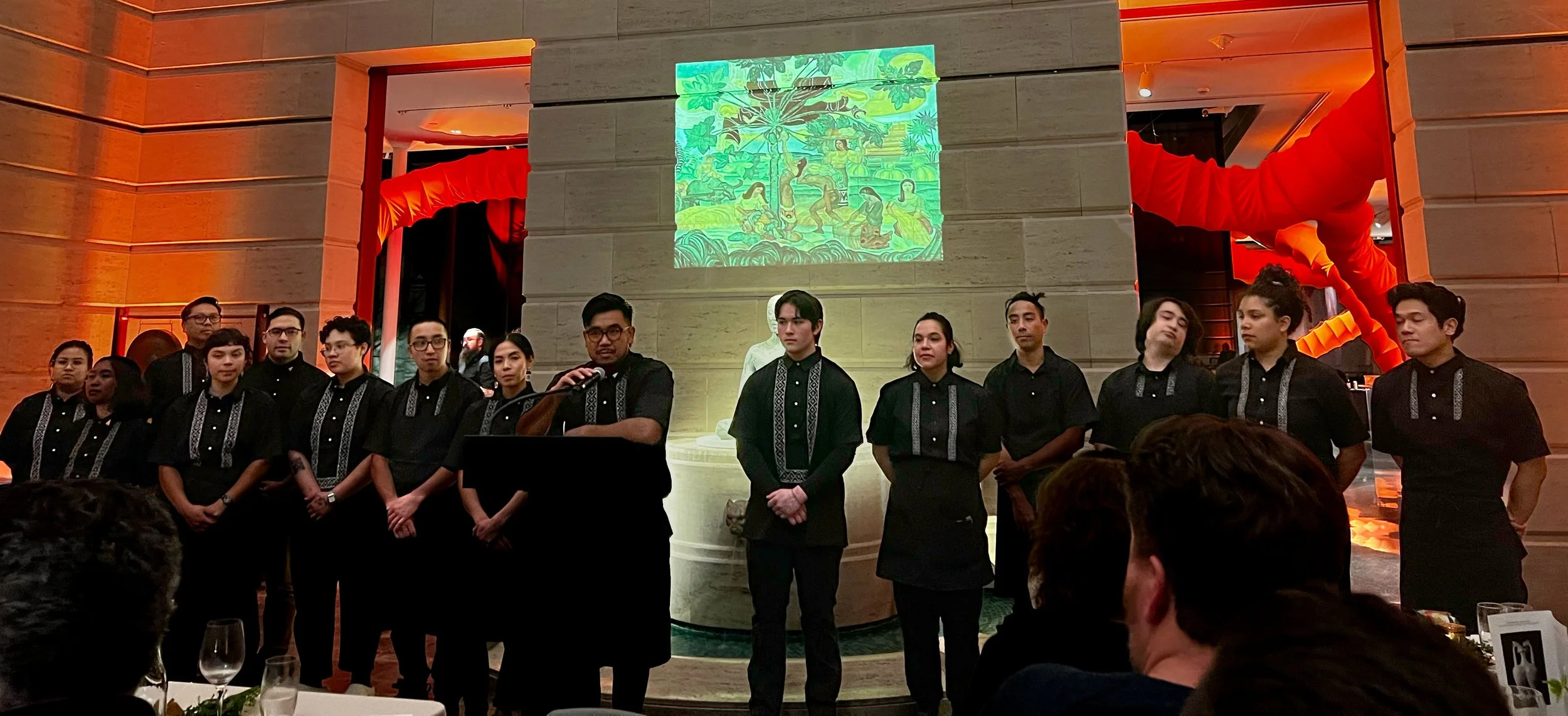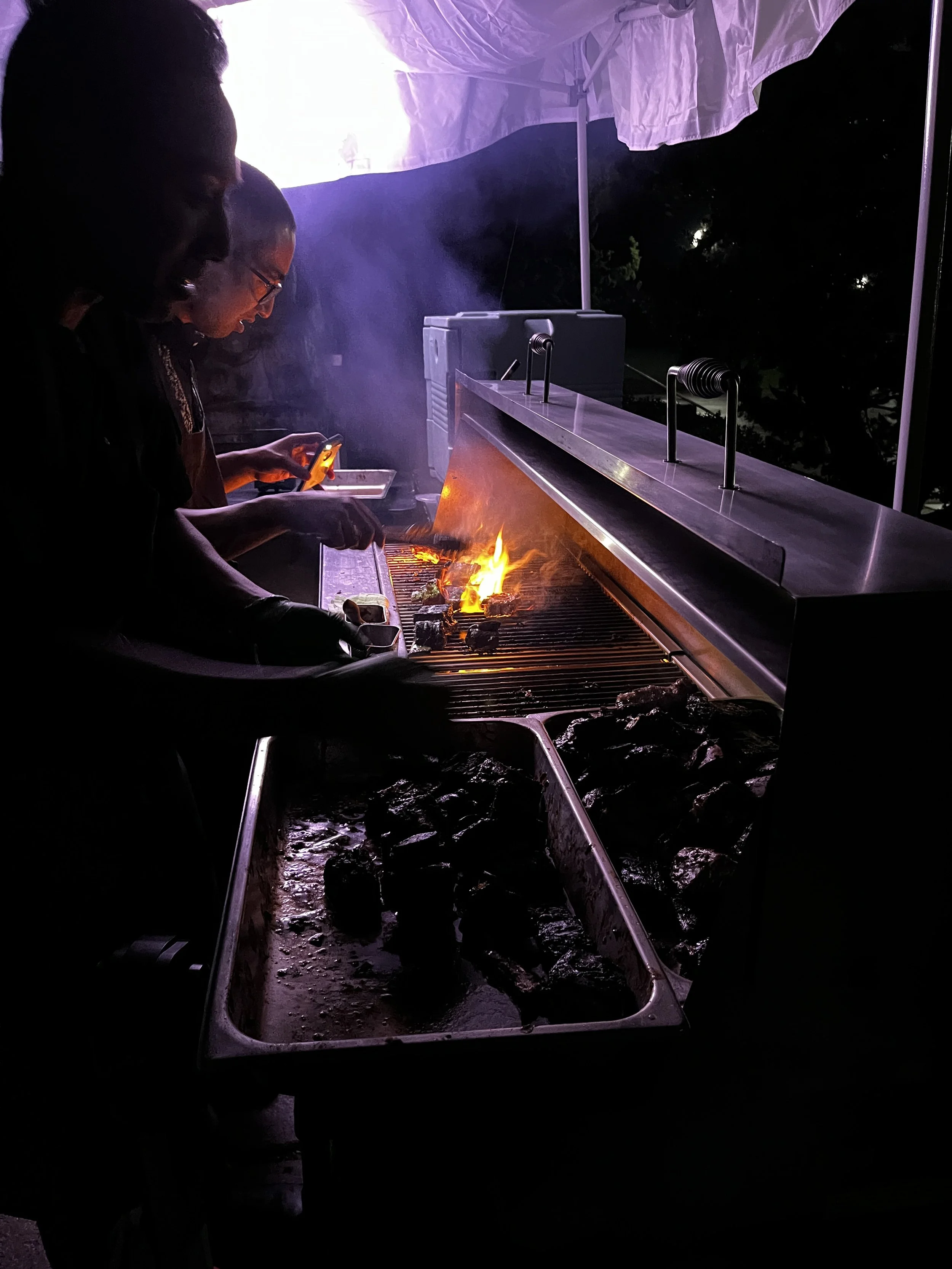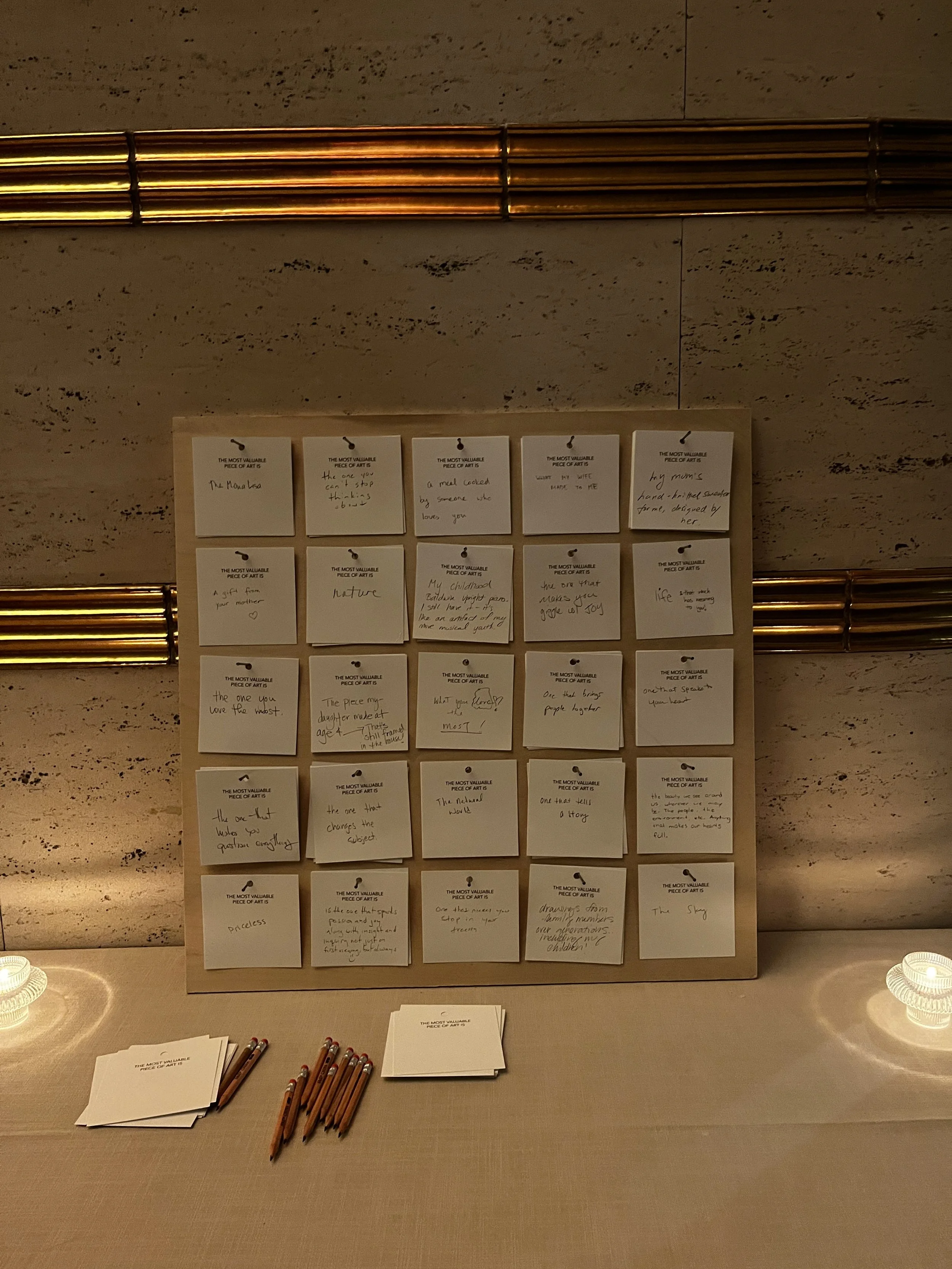Archipelago x SAAM: From the Inside Out
On February 15th, the Archipelago Team extended our experience at the Seattle Asian Art Museum, giving us the opportunity to connect with so many in our community, from former Archipelago team members to local FilAm artists. We were thrilled to welcome back legendary sommelier Nelson Daquip to the Seattle dining scene, who expertly stepped in to pour and share with guests. Lastly, we were in great hands working with the Schooby Doo team - their expertise with large events made navigating the multi level museum easier.
We are so grateful to the Seattle Arts community for this opportunity — especially to Brandon Vaughan and Aileen Aquino — and to Andrea Burgess and Emily Kelly, for working with us to translate our creative concepts seamlessly into the dining experience. Being treated like artists ourselves created opportunities to lean into experimentation and build out interactive experiences for guests at a different level and scale, inspired by interactive art in the SAAM itself.
We started with the collections at the Seattle Asian Art Museum (SAAM), letting the beauty and culture of the space itself wash over us. We absorbed each room, from the harmony of Buddhist representations to the perennials of ancient pottery. We read every placard, looked up every artist, eager to find threads of resonance within our FilAM identities and experiences.
We were awed by the work of Anida Yeou-Ali, and her art which was a daring exploration of performance and identity - tracing the path of her life and forging solidarities in Cambodia and across the globe. Further, we were inspired and pushed to imagine connections to art from much broader geographies and cultures than we normally would focus on. It might have been a word, “Burong” that unified some of the Philippine formalwear (Barong) with other artifacts from Indonesia, like a “Burong” that was currently on display in the collection. The opportunity to think along much longer time spans and geographies, when politically drawn borders looked differently was a delight. We could imagine Archipelagos, connected through water, trade, and religions, to what is now Indonesia, India, and China. The thrill and challenge of thinking without the influence of the Portuguese and Spanish - though we have - invigorated our creativity.
After going through the galleries twice over, we noted a gap in representation by FilAm artists and cultural objects from the Philippines. While not everything should be in a museum, we had to contend with this lack of representation for the purposes of this event. How could it be that FilAMs, comprising one of the largest communities in Washington, who are continuously building and shaping it, were left out?
Only one cultural object from the Philippines was on display – Ifugao Bulul. We sat with this, and noticed an opportunity instead to provoke and inspire, to shift conversations in Seattle’s art world. And, we were not alone. Researching the collections and working with local artists we found a theme that had been long discussed. A curator from the SAAM described with similar feelings attempting to examine Philippine art - but running up against the collections. We had our sentiments and vision echoed enthusiastically by Romson Bustillo, a local FilAM artist who wrote us with enthusiasm and excitement when we spoke about our event’s concept.
Gabâ ug Karma.
"Though the meaning has evolved in contemporary Philippines, the indigenous precolonial concept of Gabâ or gabaa, particularly among Bisaya, originally involved a complex understanding of non-human, non-divine retribution. Central to this; if you wrong someone or something, it will comeback to you and/or yours. There is no fixing it.Our understanding of Karma is part of the Hindu and Buddhist concepts shared by many SE Asian cultures inherited form ancient India, localize over millennia.” — Romson Bustillo
Led by Amber Manuguid’s background in the arts, we crafted an experience beginning in the past that we called Value. Again, with a history everyone should know. Victorio Edades and the Thirteen Moderns, enduring legacies of FilAm avant-gardes, and FilAM artists shaping our region today.
We sat in the comfort and discomfort of the Seattle Asian Art Museum’s location in Volunteer Park, a site designed to memorialize those who fought in the Spanish-American war. The results of which made the Philippines (and many other places) a US territory until after WWII in 1945. It felt powerful to work within the Museum in this way to bring in art and stories that spoke directly to FilAms.
In tandem with this event, we also worked to understand the historical implications of collections - those especially acquired through colonial means thanks to the teaching work and research of Gabbie Mangaser, a curator at the Burke Museum. These connections and a community of support surrounding this endeavor allowed us to move with intention from the onset of the invitation.
We see this event as the first of many opportunities to lead with our own voice as artists. To do what we do somewhere else with the same level of attention to detail. This event magnified the urgency from which we operate, re-invigorating the whole team to see ourselves as part of the artistic community of this city. To use our opportunities to amplify and resonate with others who have worked tirelessly before us and make sure their stories live on.
#teamarchipelago #representationmatters #buildcommunityequity











